It’s a reality: not many news outlets see teenagers as their target audience.
In fact, they don’t even think teenagers will get near their products. When we in the newsroom discuss “attracting the young”, we usually are happy to see 25 to 35 year olds coming to sample what we have to offer in the way of news and information.
Not so fast, however. Teens apparently are interested in news and current events. However, according to research:
Young adults are more likely to consume news through social media sites than they are traditional news organizations, online or in print, but that isn’t necessarily a negative when it comes to news. Teens who use social media are more likely to be civically engaged, and smartphone users who engage with social media report they’re more regularly exposed to people who have different backgrounds, and feel like they have more diverse networks.
Apparently teens have realized that they are not front and center as a potential target audience for many news pubilshers, so a young person has taken things into her own hands, creating theCramm.

Already in 6 continents and 47 countries, theCramm has these two mottos: We Cramm the news so you don’t have to and Giving you the cheatsheet to the world.
So, how do they do the “cheatsheet” part of the promise? Ironically, it is not too different from what we see in so many newsletters these days: snippets, listings, good use of subheads to guide the reader. Let’s take at this example of a lead story on the site: about the Amazon fires.
Follow their treatment of the Amazon story here:
http://www.thecramm.com/news.html


As we can see, what theCramm does is to break down big stories into witty, snackable facts that can be consumed quickly. Remember, theCramm can come to users via text—which makes sense, considering how much teens are engaged with texting.
I have subscribed to theCramm, as I think I can learn about the choice of stories and the treatment that are displayed in the site, and get some insight information as to what appeals to one of the toughest and most elusive of audiences.
What teens look for in news!
Here are key findings from research devoted to teenagers and how they consume news:
- 1. A large majority of teens age 13 to 17 in the U.S. (78%) say it’s important to them to follow current events.
- 2. Teens get their news more frequently from social media sites (e.g., Facebook, Twitter) or from YouTube than directly from news organizations themselves. More than half of teens (54%) get news from social media, and 50% get news from YouTube at least a few times a week. Fewer than half, 41%, get news reported by news organizations in print or online at least a few times a week, and only 37% get news on TV at least a few times a week.
- 3. Teens are as likely to learn about what’s happening from online influencers and celebrities as they are from news organizations and people in their lives. Teens are about equally likely to say they are primarily informed about current events by news organizations (31%) as they are by family, friends, or teachers (33%) and by influencers or celebrities they follow online (31%).
- 4. Teens say they trust established news organizations more than other sources and that for the most part they are able to distinguish fact from fiction. Seven in 10 overall (70%) say that news reported by news organizations “generally gets the facts straight,” while just 38% say the same about news from celebrities, influencers, or social media personalities. Nearly two in 10 teens (19%) actually say that getting news from social media has made them more confused about current events.
- 5. YouTube recommendations drive news consumption. Among all teens who get their news on YouTube — regardless of how often — exactly half (50%) say they most often find news on YouTube because it was recommended by YouTube itself (i.e., as a “watch next” video or in the sidebar). Almost half as many (27%) say they follow or subscribe to a specific channel for news on YouTube, and fewer say they find their news on YouTube through search (10%) or because it was shared by someone they know in real life (7%).
- 6. Sixty percent of teens who get news from YouTube say they are more likely to get it from celebrities, influencers, and personalities, as compared to news organizations (39%). The difference is even more apparent among daily YouTube news consumers: 71% vs. 28%.
- 7. Teens clearly prefer a visual medium for learning about the news. A majority (64%) say that “seeing pictures and video showing what happened” gives them the best understanding of major news events, while just 36% say they’d prefer to read or hear the facts about what happened.
Of related interest
50% of U.S. Teens Are Getting Their News From YouTube, But Not From News Organizations
Common Sense and SurveyMonkey found that celebrities, influencers and personalities were their sources more often
My interview with CNN en Español
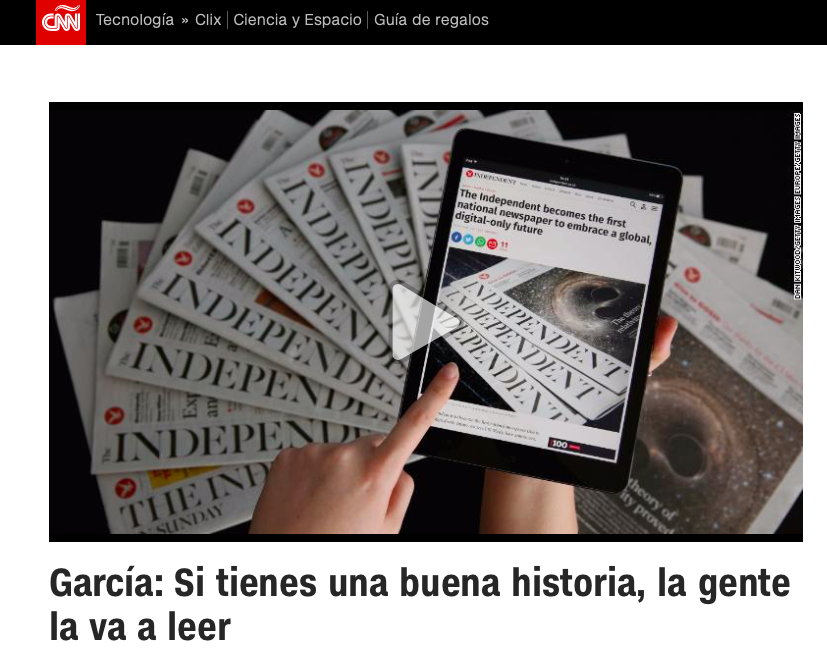
I was a guest in the program Encuentro, hosted by Guillermo Arduino daily at CNN en Español. The interview was about how we read on mobile devices and my introduction of my new mobile storytelling book, The Story, to a Spanish-language audience.
Mario’s speaking engagements

Keynote Luncheon Speech: Ad Club of Toronto, Newspaper Day
October 25, 2019
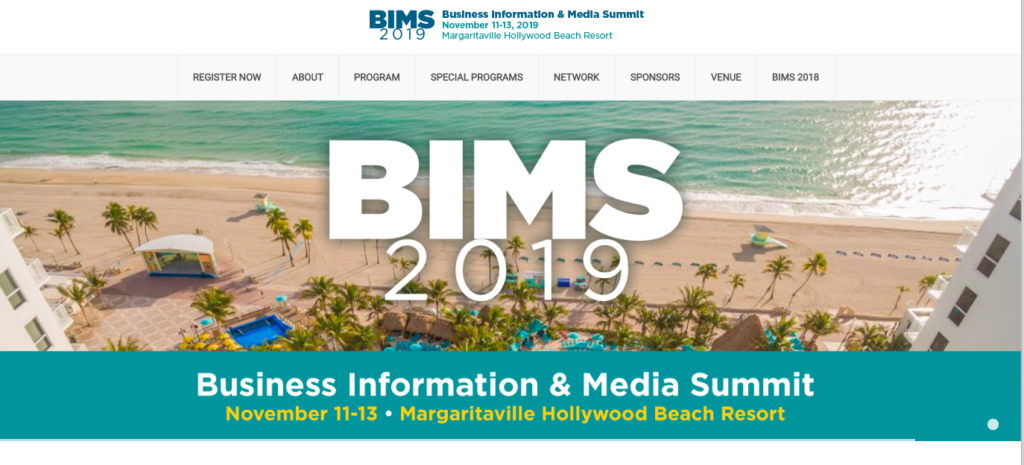
Keynote presentation: Business Information & Media Summit (BIMS).
November 12, 2019
Order print edition of The Story from Amazon
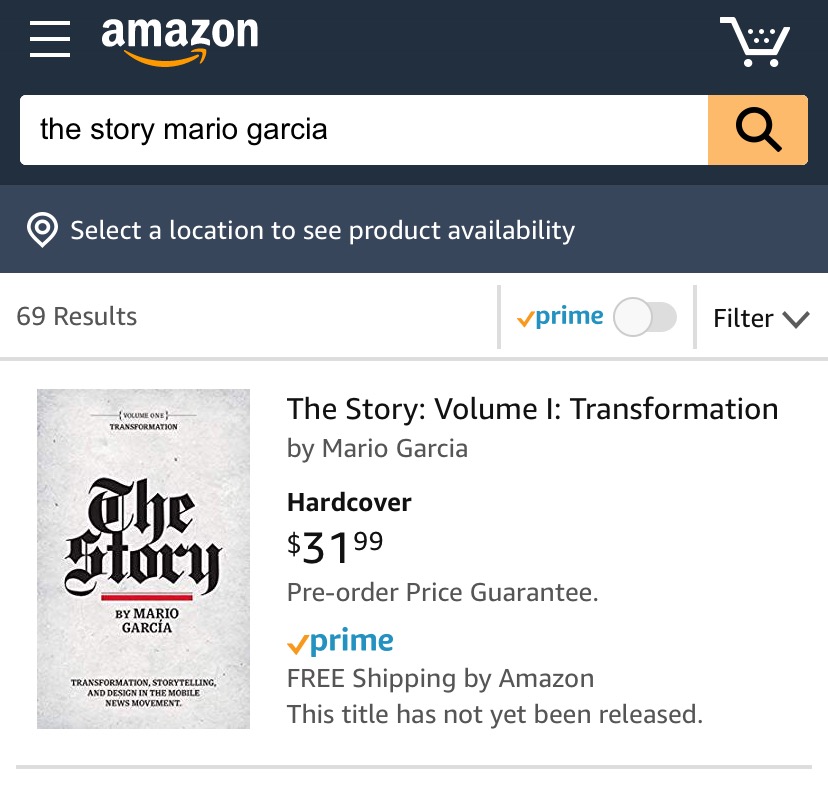
You can order the print edition of my new mobile storytelling book, The Story, from Amazon already here:
Pre-order The Story
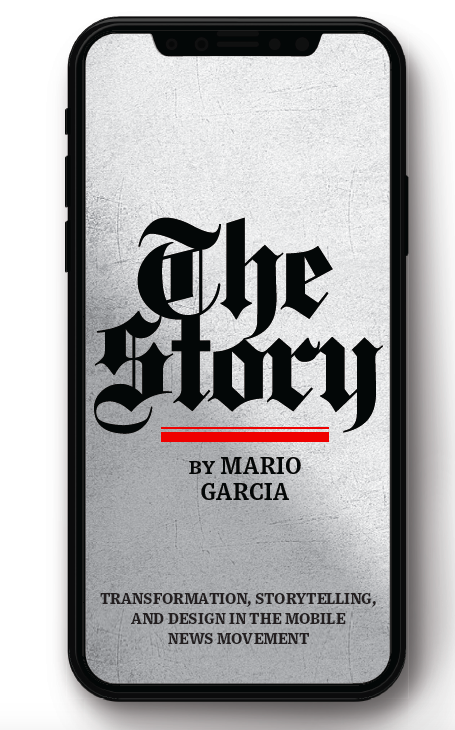
The newspaper remains the most powerful source of storytelling on the planet. But technology threatens its very existence. To survive, the Editor must transform, adapt, and manage the newsroom in a new way. Find out how, pre-orderThe Story by Mario Garcia, chief strategist for the redesign of over 700 newspapers around the world.
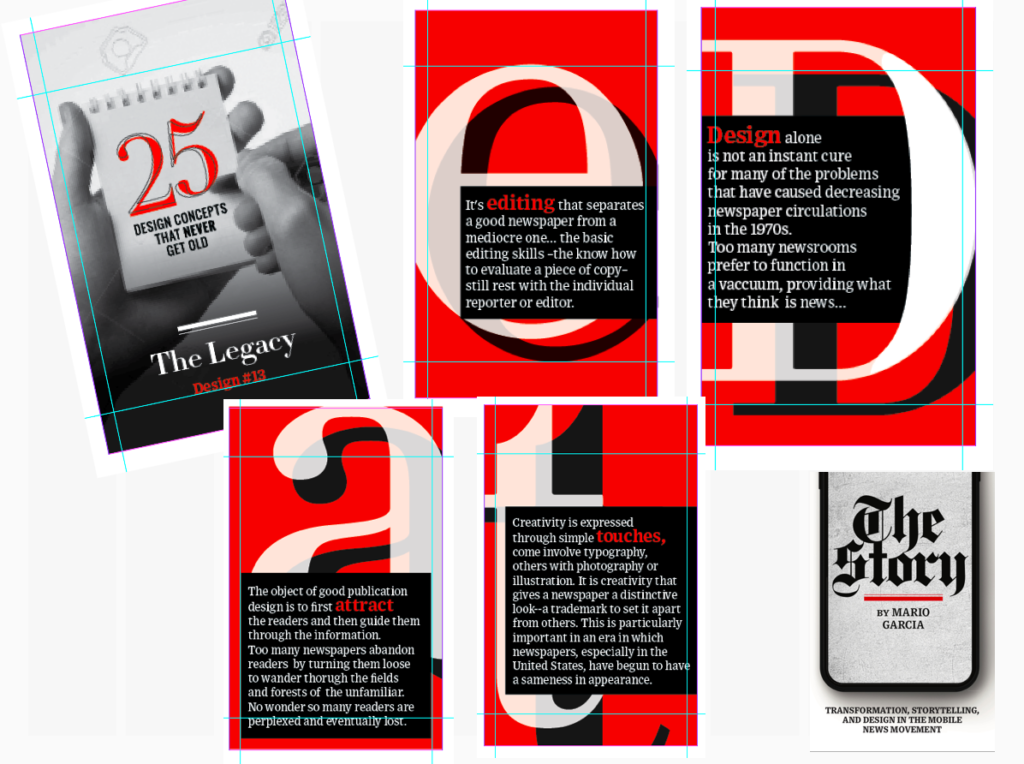
Order here:
https://thaneandprose.com/shop-the-bookstore?olsPage=products%2Fthe-story

The Story will also appear in print
I am happy to announce that we will, indeed, have a print edition of my mobile storytelling book, The Story. I thank you for expressing your interest to our publisher, Thane Boulton, of Thane & Prose. Now the print edition will be a reality, and you can already see the cover and back cover here:
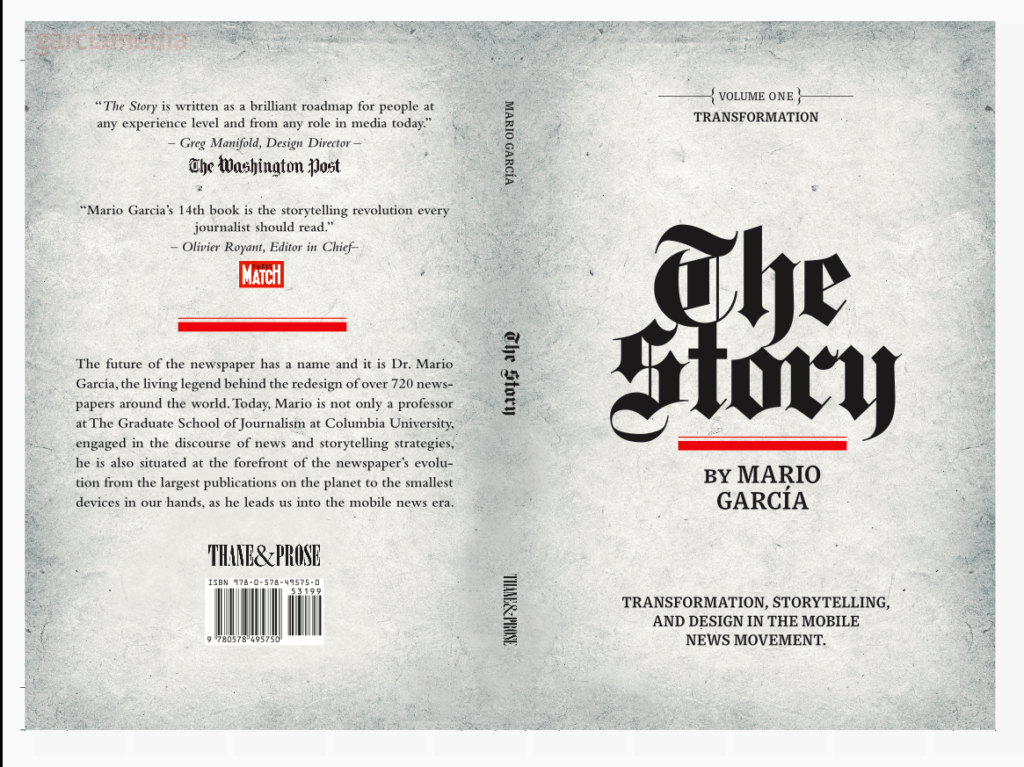
An interview of interest
http://www.itertranslations.com/blog/2019/3/11/fd60ybflpvlqrgrpdp5ida5rq0c3sp
TheMarioBlog post # 3106